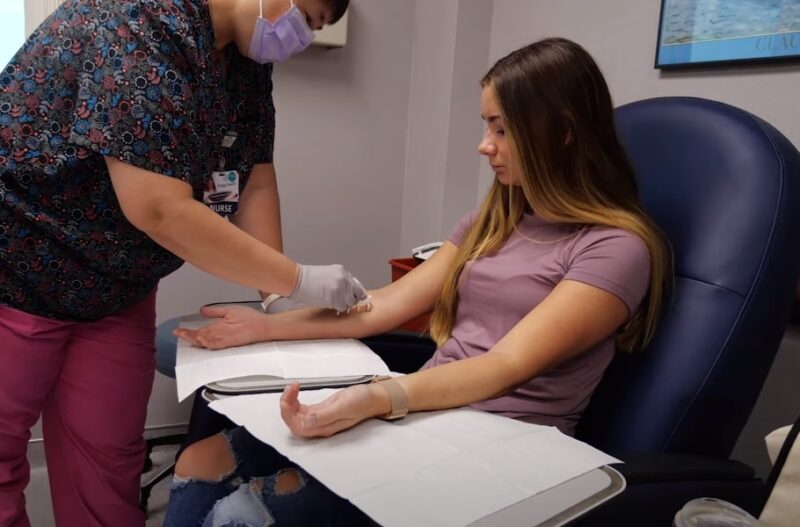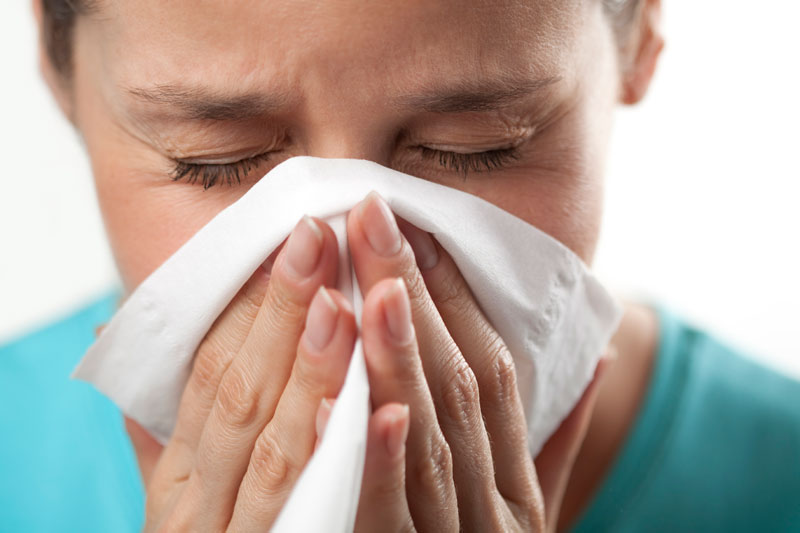Allergic rhinitis, a condition closely related to asthma and conjunctivitis, is a prevalent yet often overlooked issue in primary care settings. This long-standing ailment impacts up to 40% of the population, making it a significant health concern.
Characterized by symptoms such as nasal congestion, itching, runny nose, and sneezing, allergic rhinitis can significantly affect an individual’s quality of life. Understanding the different types of this condition, along with effective diagnosis and treatment methods, is crucial for managing this condition.
Key Takeaways
- Classified into seasonal, perennial, occupational, and local allergic rhinitis, each type is defined by its triggers and duration of symptoms.
- Diagnosis involves a thorough history, physical examination, and possibly allergen skin testing or specific IgE tests, with treatments including allergen avoidance, medications, and immunotherapy.
- Symptoms can be intermittent or persistent, with severity ranging from mild to moderate/severe, guiding treatment approaches.
Types of Allergic Rhinitis

This condition can be broadly classified into several types, based on symptom duration, severity, and cause:
| Type | Trigger | Symptoms | Management |
| Seasonal | Tree, grass, or weed pollens at specific times of the year | More pronounced outdoors and can vary significantly from year to year | Preventive measures and timely treatment |
| Perennial | Indoor allergens like dust mites, pet dander, or molds | Constant symptoms leading to chronic discomfort and sleep disturbances | Regular cleaning and air filtration |
| Occupational Rhinitis | Allergens found in the workplace, either IgE-mediated or due to non-allergic irritants | Symptoms may improve during periods away from work | Identifying and reducing exposure to workplace allergens |
| Local Allergic Rhinitis | Localized nasal response without systemic evidence of atopy | May not respond to traditional allergy treatments | Diagnosed through specific nasal allergen provocation tests and requires targeted approaches |
Diagnosis

A thorough history and physical examination are essential for diagnosing allergic rhinitis. This may be complemented by allergen skin testing or allergen-specific IgE tests to identify the allergic triggers. Understanding the type of allergic rhinitis is crucial for effective management.
Precise identification of allergens is vital for tailoring treatment plans and avoiding unnecessary medications or interventions.
Treatment

Treatment strategies for this condition aim at relieving symptoms and include:
- Allergen Avoidance: The first step in managing allergic rhinitis is to avoid known allergens as much as possible. This may involve staying indoors during high pollen days or using dust mite-proof covers. Simple adjustments to daily routines can significantly reduce allergen exposure and alleviate symptoms.
- Medications: Second-generation oral antihistamines and intranasal corticosteroids are commonly prescribed to reduce symptoms. These medications can provide rapid relief from symptoms and are generally well-tolerated, with minimal side effects. It’s important to start treatment early in the allergy season for best results.
- Allergen Immunotherapy: Recommended for patients who do not respond well to pharmacologic therapy or cannot tolerate it. This treatment involves exposing the patient to increasing amounts of the allergen to build tolerance. Immunotherapy can be a long-term solution, potentially reducing the severity of reactions and the need for medications over time.
Symptom Duration and Severity
An important aspect of managing allergic rhinitis is understanding the classification based on symptom duration and severity:
| Classification | Criteria | Recommended Management |
| Intermittent Allergic Rhinitis | Symptoms < 4 days/week or < 4 consecutive weeks | As-needed medications, minor lifestyle adjustments, recognizing and avoiding triggers |
| Persistent Allergic Rhinitis | Symptoms > 4 days/week and > 4 consecutive weeks | Regular use of medications, possibly allergen immunotherapy |
| Severity (Mild) | Symptoms do not impair sleep or daily activities | Tailored management to minimize impact, focus on lifestyle adjustments |
| Severity (Moderate/Severe) | Symptoms significantly affect sleep, daily activities, or are bothersome | Comprehensive treatment strategy, including medications and potentially allergen immunotherapy, lifestyle adjustments |
What Can Worsen Allergic Rhinitis?

The symptoms can significantly worsen due to exposure to various environmental irritants. These irritants may not cause allergic rhinitis but can aggravate symptoms in individuals already suffering from the condition. Key irritants include:
- Tobacco Smoke: Smoke from cigarettes and other tobacco products can irritate the nasal passages, leading to increased congestion, sneezing, and discomfort.
- Pollution: Airborne pollutants, including vehicle exhaust and industrial emissions, can exacerbate nasal irritation and inflammation.
- Strong Odors: Perfumes, cleaning products, and other strong scents can trigger nasal irritation and exacerbate symptoms.
- Chemical Exposures: Exposure to certain chemicals in the workplace or home environments, such as those found in paints or solvents, can aggravate the nasal lining.
- Temperature Changes: Sudden changes in temperature or humidity can lead to nasal discomfort and worsened symptoms.
- Outdoor Air Quality: High levels of pollen and mold spores in the air, especially during certain seasons, can increase the severity of allergic reactions.
Risk Factors
Several factors can increase the likelihood of developing this condition. Understanding these risk factors can help in the early detection and management of the condition:
1. Genetics
A family history of allergies or asthma significantly increases the risk of allergic rhinitis. If one or both parents have allergic conditions, their children are more likely to develop allergies.
2. Atopy
Individuals with atopy, a genetic tendency to develop allergic diseases, are at higher risk. This includes conditions like eczema, allergic rhinitis, and asthma.
3. Environmental Exposure
Regular exposure to potential allergens, such as pet dander, dust mites, and pollen, can increase the risk of developing allergic rhinitis.
4. Occupational Exposures
Working in environments where irritants or allergens are prevalent, such as in agriculture, woodworking, or animal handling, can heighten the risk.
5. Early Life Exposures
Exposure to certain factors in early life, such as tobacco smoke or high levels of indoor allergens, can contribute to the development of allergic rhinitis.
6. Season
People may be more prone to seasonal allergic rhinitis during specific times of the year when pollen from trees, grasses, or weeds is abundant.
FAQs
Can allergic rhinitis lead to other health conditions?
Yes, if left untreated, this condition can lead to complications such as sinusitis, and ear infections, and could exacerbate asthma symptoms.
Are there any dietary changes that can help manage allergic rhinitis?
A balanced diet rich in antioxidants and omega-3 fatty acids may help reduce inflammation and alleviate symptoms.
Can moving to a different location permanently cure allergic rhinitis?
Moving might temporarily relieve symptoms if you avoid specific allergens. However, it’s possible to develop new allergies to allergens in the new location over time.
Is it possible to outgrow allergic rhinitis?
Some children may see their symptoms improve as they get older, but the condition can persist into adulthood. The severity of symptoms can vary throughout a person’s life.
Can indoor plants worsen allergic rhinitis symptoms?
Some indoor plants can contribute to mold growth or release pollen, potentially worsening symptoms for sensitive individuals. However, many indoor plants do not significantly affect allergic rhinitis.
Summary
Allergic rhinitis, while common, requires careful attention and management due to its potential impact on individuals’ daily lives and association with other conditions such as asthma and conjunctivitis. Treatment may include allergen avoidance, medications, and possibly allergen immunotherapy.
With the right approach, people with this condition can lead comfortable, symptom-free lives.
